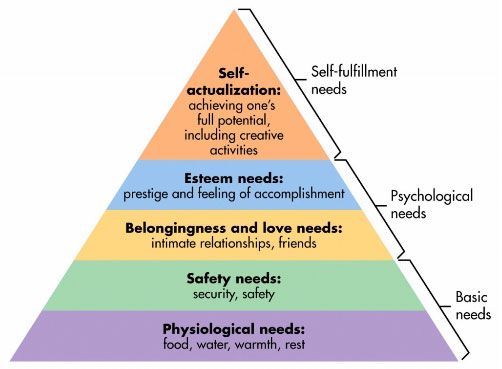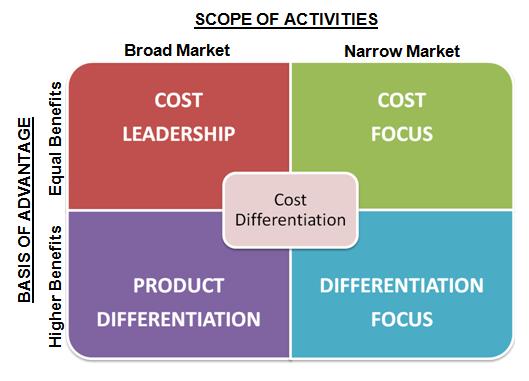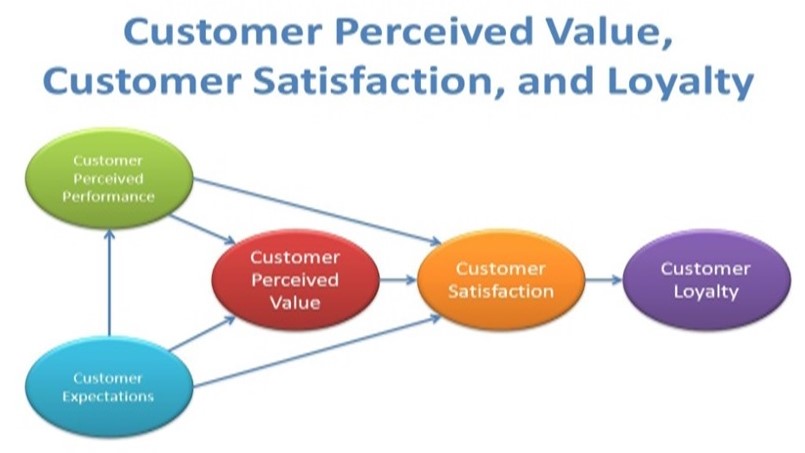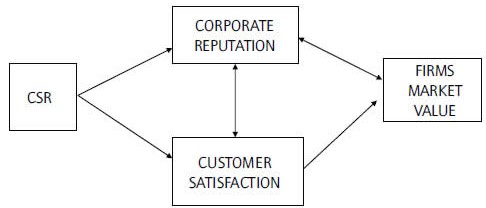Introduction
Bangladesh is one of the most populated countries in the world, with an estimated population of about 163,187,000 people (Alam & Rubel 2014). The country’s telecom industry has experienced massive expansion, especially with the emergence of affordable cell phones. In 2009, it was estimated that 45.21 million people owned cell phones in this country. The population increased to 124.705 million people in 2014 (Hafez & Akther 2017). It is a clear indication that the number of mobile phone users in the country has significantly increased over the past six years. New operators have emerged in the market to take advantage of this growing market size. According to Ahsan (2014), the telecom industry in Bangladesh has attracted both local and internal players. The table below shows the current players in this industry.
Grameephone Limited is the leading network operator in this country, having a market share of 41.18 percent. It is followed by Robi Axiata Limited enjoying 26.63% of the market share in the country. Other dominant players include Airtel Bangladesh, Teletalk Bangladesh, and Pacific Bangladesh Telecom Limited (Abdullah & Hossain 2014). Competition in this market is very stiff as companies struggle to meet the unique needs of the customers in the best way possible in the market. The players in this industry are trying to be creative an innovative as a way of winning the trust and loyalty of the customers. As more firms emerge, the need to win loyalty of customers increase. In fact, Khosrow-Pour (2015) says that the players tried price wars in the past, but it proved unsustainable in their operations. As such, they are trying to find alternative ways of managing the market competition. As the industry continue to expand, it is expected that more companies will emerge targeting the huge population of mobile phone users (Albarran 2017).
Customer Satisfaction and Customer Loyalty
According to Gbadamosi, Bathgate, and Nwankwo (2013), customer satisfaction refers to how well a given product or brand meets or surpasses customers’ expectations. When purchasing an item, there is always the expectation that an individual has towards such a product. When the product meets the expectations that a customer had, then the customer will be satisfied. In case the expectations are surpassed, then Blythe (2013) says that such a customer will be thrilled. Surpassing the expectations of the customers is the best way of winning loyalty of customers. It is a demonstration to them that the firm can offer them more than they can ever expect at normal prices. However, Epps and Trebilcock (2013) warn that surpassing customers’ expectation is not easy. It requires creativity and innovativeness. A firm must be capable of thinking creatively and coming up with a product that of superior value to the customers. As French and Gordon (2015) say, different customers have different expectations, and therefore, can be satisfied with different types of product. Maslow’s Hierarchy of Needs is one of the theories that explain how social status in the society defines needs of people that make them have varying needs. The figure below shows the varying needs as explained in this theory.

As shown in the figure above, majority often fall in the lowest level of the ladder where they only have the physiological needs of food, water, warmth, and rest (Ballantyne & Packer 2013). As a developing economy where 43% of the population still lives below the international poverty line of less than $ 1.25 per day, majority of the people in Bangladesh fall in this category (Rashida, Khalid, & Rahman 2015). When it comes to the use of phones, they only need basic communication means at the cheapest price possible. The second level in the ladder is still interested in the basic needs, but their focus goes beyond physiological needs to safety and security needs. They may afford to choose, but their decision is still primarily based on the price of the product offered to them. Belongingness and love needs come next. Individuals in this category are the middle class people who can easily meet all their basic needs and what they desire are the psychological needs. They are followed by a group of individuals with esteem needs such as prestige and accomplishments.
The last category at the apex is people with self-fulfillment needs. Self-actualization is a stage where one feels that he or she has achieved full potential and that there is nothing more left to be achieved (Agarwal et al. 2015). Very few people fall in this category. It is important to note that the higher a customer is within the rank, the more complex their needs are, and the higher the price they are willing to pay. While it is easy to meet the needs of people in the lower social ranks because they only need to meet the basic needs, dealing with the rich is very complex because they often want specific needs to be met. They know what they want and how it should be delivered to them, and when anything less than that is offered, then they will be dissatisfied and can even consider opting for an alternative product. It is important for a firm to understand the strategy that it can use to meet the expectations of customers in the market. The following figure shows the positioning strategy that a firm should use to satisfy the needs of different customers in the market.

When a firm is seeking to satisfy its customers and win their loyalty, it can use the strategies shown in the figure above based on the customers it is targeting. Cost leadership is very reliable when the targeted customers have low purchasing power. The strategy can be very appropriate in Bangladesh where 43% of the country’s population lives in poverty. In this strategy, the firm’s focus will be to offer normal products but at relatively low prices compared with what other firms offer. It means that the provider will try to ensure that its call rates are lower than what the rival companies offer to win satisfaction and loyalty of the customers. The other strategy relevant to the Bangladesh telecom industry is the differentiation strategy. In this strategy, Tate (2015) explains that a firm must focus on offering something unique compared with what competitors offer. The product or product delivery approach must meet the expectations of the customers in a unique way. The strategy can be used to target the rich and the upper middle class members of the society in Bangladesh.
Public Relations Strategy
According to Turyakira, Venter, and Smith (2012), sometimes it may force a firm to go beyond product and product delivery strategies to meet the needs of the customers. This is specifically so when the products offered by firms in that industry cannot be easily differentiated. This is the case that most of the telecom services providers all over the world face. In such situations, it becomes necessary to find alternative means of winning customer loyalty. Such firms are forced to find a way of creating brand satisfaction in the market. Azevedo (2013) says that creating brand satisfaction may be a challenging process because it may require a firm to engage in activities that are not related to production and product deliveries. It may force a company to be involved in activities that may not earn it direct profits. It is at that stage that corporate social responsibility becomes a relevant tool of winning trust and loyalty of the customers.
Path towards Satisfaction and Loyalty
According to Moon (2014), customer loyalty directly depends on their level of satisfaction. Clients can only be loyal to a brand and a product if they are convinced that their expectations are met in the best way possible. Amaeshi, Nnodim, and Osuji (2013) argue that the path towards customer loyalty starts with the perception. The following figure shows the path that a firm can take to create customer satisfaction and loyalty in the competitive telecom industry of Bangladesh.
Creating customer satisfaction and loyalty

As shown in the figure above, it all starts with the customer’s expectation of a product or a brand when they are planning to purchase a product. During the process of consumption, customer perceived performance would be created. The customer will develop a perception about the product and that will form a basis of their perceived value of the product. Perception is critical in the path towards creating customer loyalty. If they develop positive perception of the brand, they will be satisfied. Once satisfied they will develop loyalty towards the brand. A firm that seeks to create through activities other than their product delivery activities should target influencing the perception of their customers. It may take a while before customers can develop positive perception, but once created, it may last for a long time. It may help a firm to gain competitive edge over its rivals in the market.
Corporate Social Responsibility
Corporate social responsibility is a concept that has gained massive popularity over the recent past as companies try to win trust and loyalty of their customers (Oberseder, Schlegelmilch, & Murphy 2013). According to Qamar, Masood, and Junaid (2016), corporate social responsibility, also known as responsible business or corporate citizenship, can be defined differently from different contexts. However, it generally means engaging in sustainable development through delivery of social, economic, and environmental benefits to the society without expecting equal economic return. According to Baker (2013), business entities have integrated corporate social responsibility as part of their marketing and public relations strategy. In the modern society, companies have realized that marketing is the only way of strengthening their brand and popularizing their products. As such, many companies around the world are spending a lot on marketing using various social networking and mass media platforms (Yunus, Bojei, & Rashid 2013). Customers are often bombarded with constant marketing messages to an extent that in most of the cases they consider advertisements a nuisance. They have learnt to ignore the constant marketing messages that they often come across. Dynamic firms are evolving, and they are now using a completely different strategy to promote their brands instead of using conventional marketing strategies.
Cognitive Dissonance Theory can help explaining why corporate social responsibility has become very critical in the corporate world. This theory holds that individuals often have a tendency of seeking among their cognitions, especially their opinions and beliefs. When they have trust in a given brand or a product, they will need factors within the environment that will reinforce their belief about the product or brand and why they should continue trusting and being loyal to it. If the consistency lacks and information is revealed that puts to question their trust, then they develop dissonance towards the product or brand and may avoid it in future. Corporate social responsibility becomes critical because it helps in reinforcing the positive attitude that customers may have about the brand. It informs customers that they have all the right to continue trusting in the brand and the company because that company is keen on sharing its success with the society. According to Gul (2014), many companies are now reducing their expenses on direct promotional activities and increasing the budget on CSR. This is so because the message passed during such social responsibility activities are often strong and convincing. It demonstrates to the society the commitment of the firm towards having a community where everyone is empowered.
Social Network Theory can help in explaining the growing popularity of CSR in the corporate world. According to Nasir, Mushtaq, and Rizwan (2014), this theory explains how people, groups, and organizations interact inside a given network. Through such interactions, stakeholders get to understand one another and major concerns that they have in regard to the relationships they have. Corporate social responsibility makes it possible for a company to interact with different stakeholders in an informal environment where issues of concern can be discussed. Other than being a brand promotional strategy, it also makes it possible for a firm to conduct market research, understanding issues of concern to the customers. Addressing these concerns can enhance customer satisfaction and loyalty. It can enable a firm to align its products with the market needs.
Impacts of CSR on Customer Satisfaction and Customer Loyalty
According to Adjei and Denanyoh (2014), corporate social responsibility has a significant impact on customers’ satisfaction and loyalty. Companies all over the world are keen on creating unique market value. The following figure shows the pattern that is often taken towards creating market value:

As shown in the figure above, customer satisfaction is very critical for a firm that seeks to remain sustainable in a market that is highly competitive. When customers are satisfied, they become loyal to a given brand. They develop loyalty knowing that the brand will always offer them the quality they desire every time they make a purchase. Customer loyalty creates a firm’s market value. The market value is created in the form of a strong brand that people trust in the market. It is important to understand how corporate social responsibility plays a role in enhancing customer satisfaction and loyalty that eventually leads to firm’s market value. The figure below shows the relationship.

As shown in the figure above, corporate social responsibility creates both corporate reputation and customer satisfaction. When a firm comes out to engage in a corporate social responsibility, especially on issues that are of importance to the society such as environmental conservation, it will gain corporate reputation. The public will view it as a company that is keen on enhancing sustainability in the society, beyond just gaining profits in the market. Corporate reputation is critical in an industry, which is as competitive as the telecom industry in this country. Such positive image may lead to customer satisfaction, as they will develop a feeling that their loyalty to the firm makes it possible for it to give back to the society. In some cases, CSR activity may lead directly to customer satisfaction. When a company sponsors a child through an education program, the family, friends, and the entire community will feel that the burden is lifted from them. The action of the firm will have direct financial benefits to these stakeholders, and that would lead to direct satisfaction of the customers, in case they are currently using its services. In case they are not, the act of goodwill by the company may be a justifiable motivation for them to start using the product. Corporate reputation and customer satisfaction both lead to a firm’s market value (Ahmed & Rouf 2015). Rahman (2012) says that such actions may help a firm to distinguish its brand from others that exist in the market. The positive image created may last for a very long time in the mind of customers.
According to Chowdhury (2015), although promotional campaigns remain critical means of creating awareness about a product and a brand in the market, companies are keen on finding alternative strategies that would be more appealing to customers. Corporate social responsibility has become an alternative marketing strategy for promoting a firm’s brand in the market. Engaging in activities such as tree planting; disaster response in cases of emergencies such as flood, earthquakes, famine, or major accidents; helping the poor in paying their school fees; making donations to the sick among such related acts of good will are very effective in winning trust of customers in the market. It helps a firm in creating a perception among customers that the firm is not just interested in gaining profits in the market. According to Hasebur (2014), CSR is becoming a major tool that companies are using to influence perception of their customers in the market. It may not result into direct profitability for the firm, but it can win it a positive corporate image in the market. Such initiatives help in strengthening a brand, especially if its CSR activities have significant positive impact on members of the public.
Reference
Abdullah, A & Hossain, M 2014, ‘Brain drain: economic and social sufferings for Bangladesh’, Asian Journal of Humanity, Art and Literature, vol. 1, no. 1, pp. 9-17.
Adeyanju, D 2012, ‘An assessment of the impact of corporate social responsibility on Nigerian society: the examples of banking and communication industries’, Universal Journal of Marketing and Business Research, vol. 1, no. 1, pp. 017-043.
Adjei, K & Denanyoh, R 2014, ‘Determinants of customer loyalty among mobile telecom subscribers in the Brong Ahafo region of Ghana’, International Journal of Business and Social Research, vol. 4, no. 1, pp. 82-95.
Agarwal, R, Selen, W, Roos, G & Green, R 2015, The handbook of service innovation, Springer, London.
Ahmed, J & Rouf, A 2015, ‘Controlled, uncontrolled communication, brand name and brand attitude: a relational study on cellular telecom sector of Bangladesh’, American Journal of Trade and Policy, vol. 2, no. 1, pp. 15-20.
Ahmed, N, Nasima, M & Alam, Z 2013, ‘Socio – business consideration of garment workers in Bangladesh: a statistical review’, ABC Journal of Advanced Research, vol. 2, no. 2, pp. 8-17.
Ahsan, S 2014 ‘Corporate culture and organizational change- a study on a large pharmaceutical company in Bangladesh’, Asian Business Review, vol. 4, no. 1, pp. 29-37.
Alam, Z & Rubel, A 2014, ‘Impacts of corporate social responsibility on customer satisfaction in telecom industry of Bangladesh’, ABC Journal of Advanced Research, vol. 3, no. 2, pp. 110-121.
Albarran, A 2017, Management of electronic and digital media, Cengage, London.
Amaeshi, K, Nnodim P & Osuji, O 2013, Corporate social responsibility, entrepreneurship, and innovation, Taylor & Francis Group, New York.
Azevedo, A 2013, Advances in sustainable and competitive manufacturing systems, Springer, Berlin.
Baack, W, Harris, G & Baack, D 2013, International marketing, SAGE, Thousand Oaks.
Baker, D 2013, ‘Service quality and customer satisfaction in the airline industry: a comparison between legacy airlines and low-cost airlines’, American Journal of Tourism Research, vol. 2, no. 1, pp. 67-77.
Ballantyne, R & Packer, J 2013, International handbook on ecotourism, Edward Elgar Publishing, Cheltenham.
Blythe, J 2013, Principles and practice of marketing, John Wiley & Sons Publishers, Hoboken.
Chowdhury, D 2015, ‘Socio-economic impacts of mobile penetration in SAARC countries with special emphasis on Bangladesh’, Asian Business Review, vol. 11, no, 4, pp. 66-69.
Epps, T & Trebilcock, M 2013, Research handbook on the WTO and technical barriers to trade, Springer New York.
French, J & Gordon, R 2015, Strategic social marketing, John Wiley & Sons, Hoboken.
Gbadamosi, A 2016, Handbook of research on consumerism and buying behavior in developing nations, Business Science Reference, Hershey.
Gbadamosi, A, Bathgate, I & Nwankwo, S 2013, Principles of marketing: a value-based approach, Palgrave Macmillan, Basingstoke.
Gul, R 2014, ‘The relationship between reputation, customer satisfaction, trust, and loyalty’, Journal of Public Administration and Governance, vol. 4, no. 3, pp. 368-382.
Hafez, M & Akther, N 2017, ‘Determinants of customer loyalty in mobile telecommunication industry in Bangladesh’, Global Journal of Management and Business Research, vol. 17, no. 1, pp. 1-10.
Hasebur, R 2014, ‘Corporate social responsibility for brand image and customer satisfaction: assessment of Grameen phone users in Bangladesh’, International Journal of Research Studies in Management, vol. 3, no. 1, pp. 41-49.
Islam, T, Rahman, S & Nahar, Z 2013, ‘Factors Affecting Customer Satisfaction in 3G Service’, American Scientific Research Journal for Engineering, Technology, and Sciences, vol.14, no. 3, pp 202-217.
Khosrow-Pour, M 2015, Encyclopedia of information science and technology, Information Science Reference, Hershey.
Moon, J 2014, Corporate social responsibility: a very short introduction, Oxford University Press, Oxford.
Munir, K & Lodhi, S 2015, ‘How customer relationship marketing affect on customer loyalty and customer satisfaction: a case of banking sector Karachi, Pakistan’, The International Journal of Business & Management, vol. 3, no. 10, pp. 586-590.
Nasir, A, Mushtaq, H & Rizwan, M 2014, ‘Customer loyalty in telecom sector of Pakistan’, Journal of Sociological Research, vol. 5, no. 1, pp. 449-464.
Oberseder, M, Schlegelmilch, B & Murphy, P 2013, ‘CSR practices and consumer perceptions’, Journal of Business Research, vol. 66, no. 10, pp. 1839-1851.
Qamar, M, Masood, S & Junaid, T 2016, ‘Impact of corporate social responsibility on customer satisfaction and retention: evidence from the banking sector of Pakistan’, International Journal of Financial Economics, vol. 5, no. 3, pp. 33-45.
Rahman, M 2012, ‘Service quality, corporate image and customer’s satisfaction towards customers’ perception: an exploratory study on telecom customers in Bangladesh’, Business Intelligence Journal, vol. 5, no. 1, pp. 56-62.
Rashida, N, Khalid, S & Rahman, N 2015, ‘environmental corporate social responsibility (ECSR): exploring its influence on customer loyalty’, Procedia Economics and Finance, vol. 31, no. 1, pp. 705-713.
Tate, C 2015, Conscious marketing: how to create an awesome business with a new approach to marketing, John Wiley & Sons, Hoboken.
Turyakira, P, Venter, E & Smith, E 2012, ‘Corporate social responsibility for SMEs: a proposed hypothesized model’, African Journal of Business Ethics, vol. 6, no. 2, pp. 106-116.
Yunus, N, Bojei, J & Rashid, R 2013, ‘Service quality towards customer loyalty in Malaysia’s domestic low cost airline services’, International Journal of e-Education, e-Business, e-Management and e-Learning, vol. 3, no. 4, pp. 333-335.